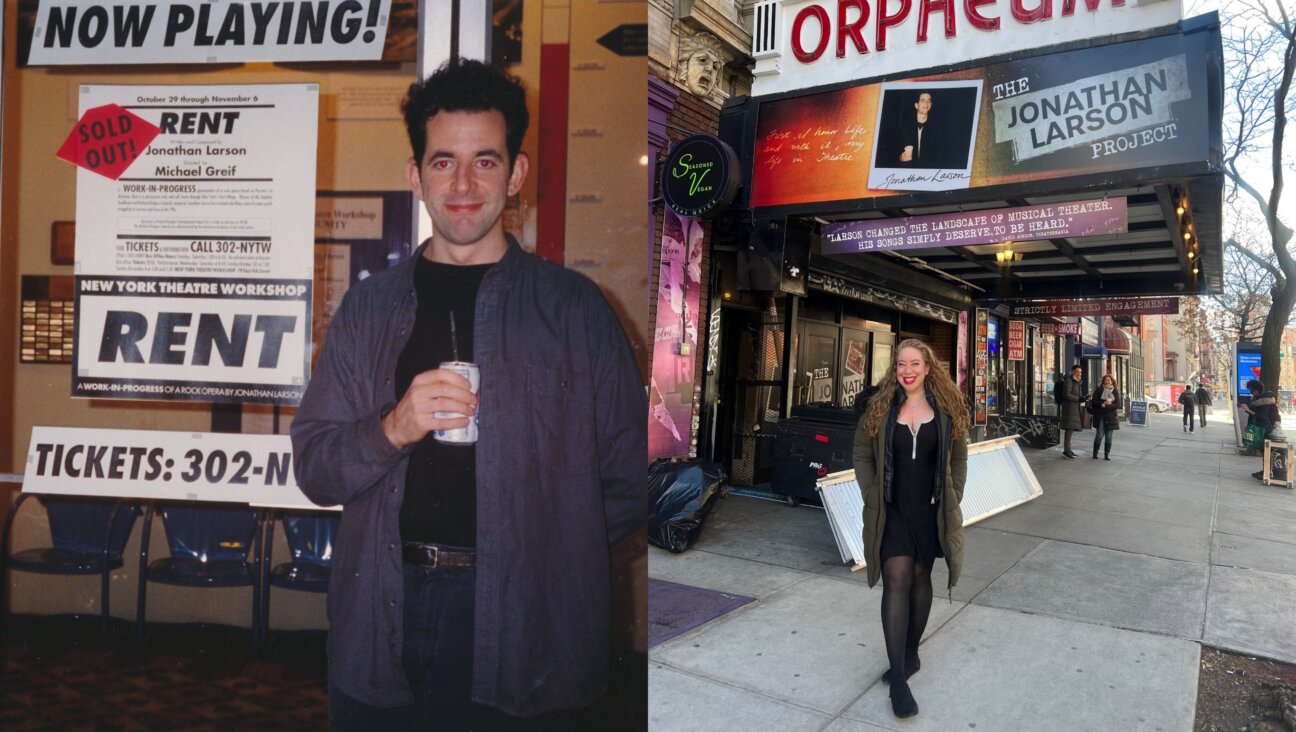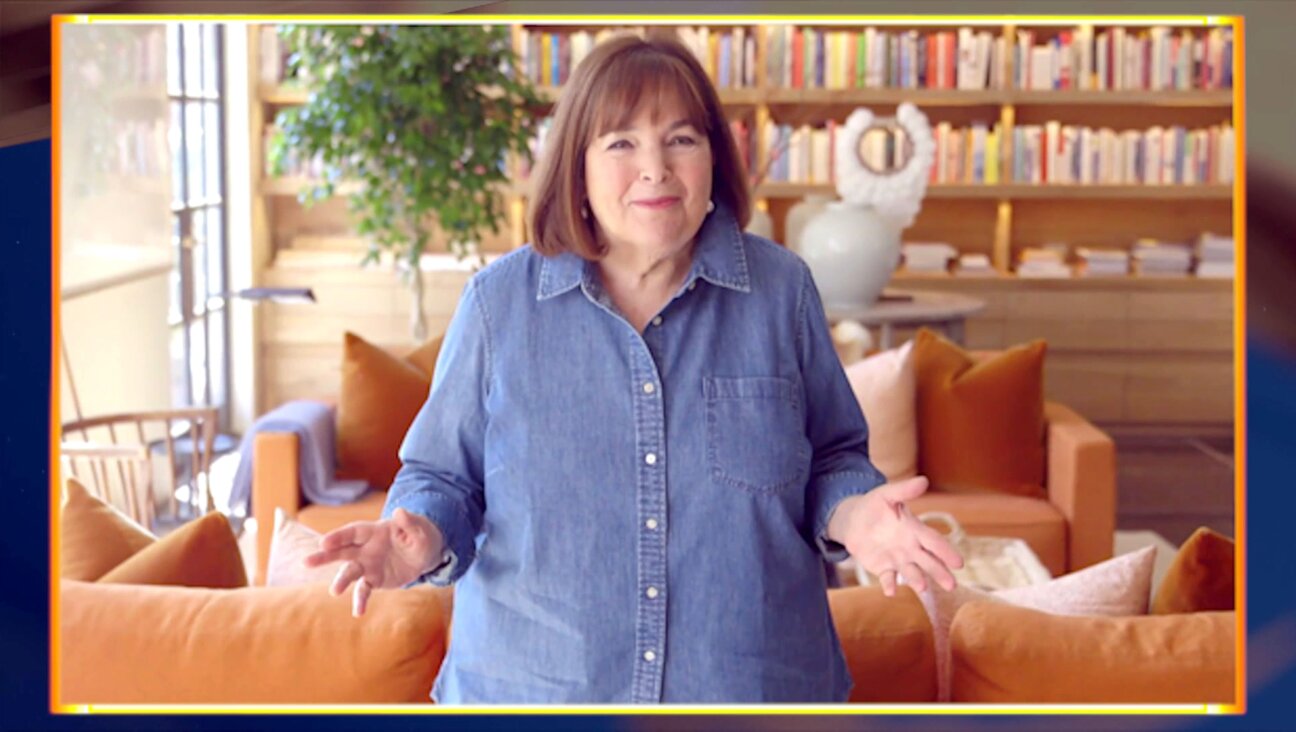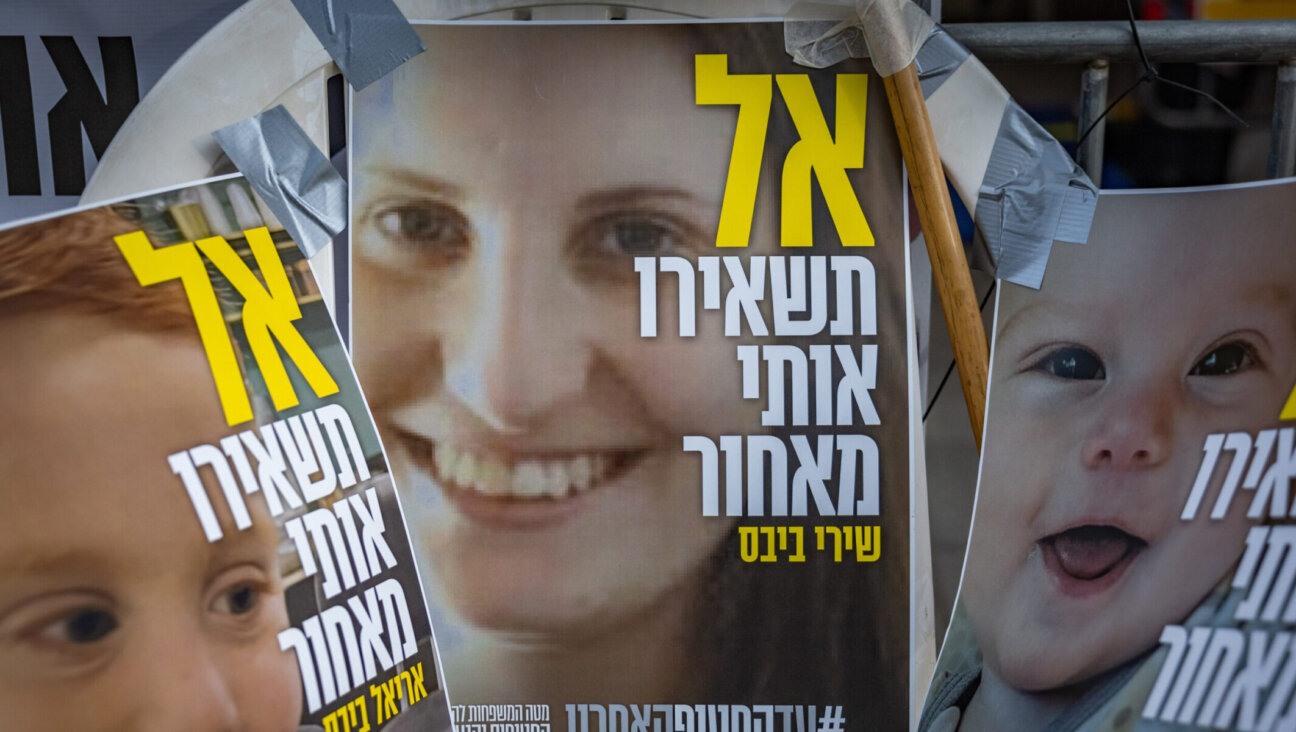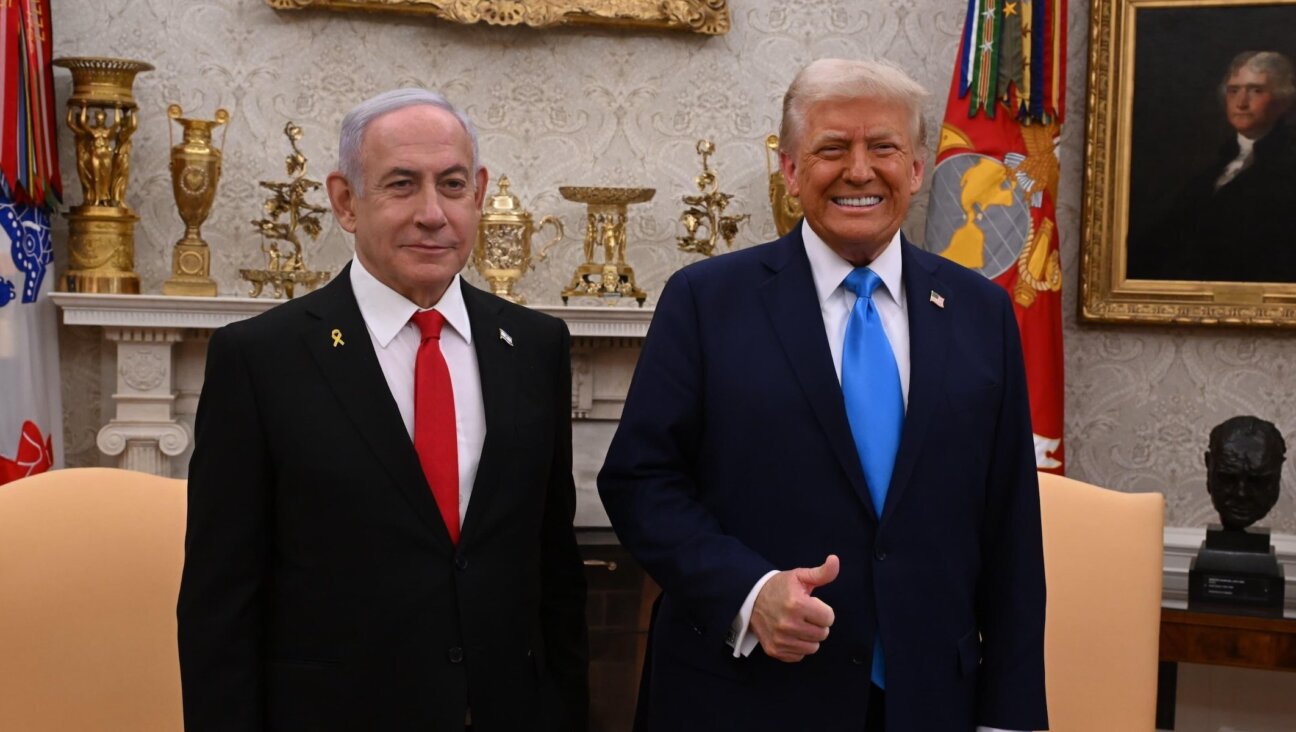A ‘Jewish Mona Lisa’ — and other myths told by objects found in Israel
In Ilit Azoulay’s exhibit at the Jewish Museum, there’s more to an object than what meets the eye
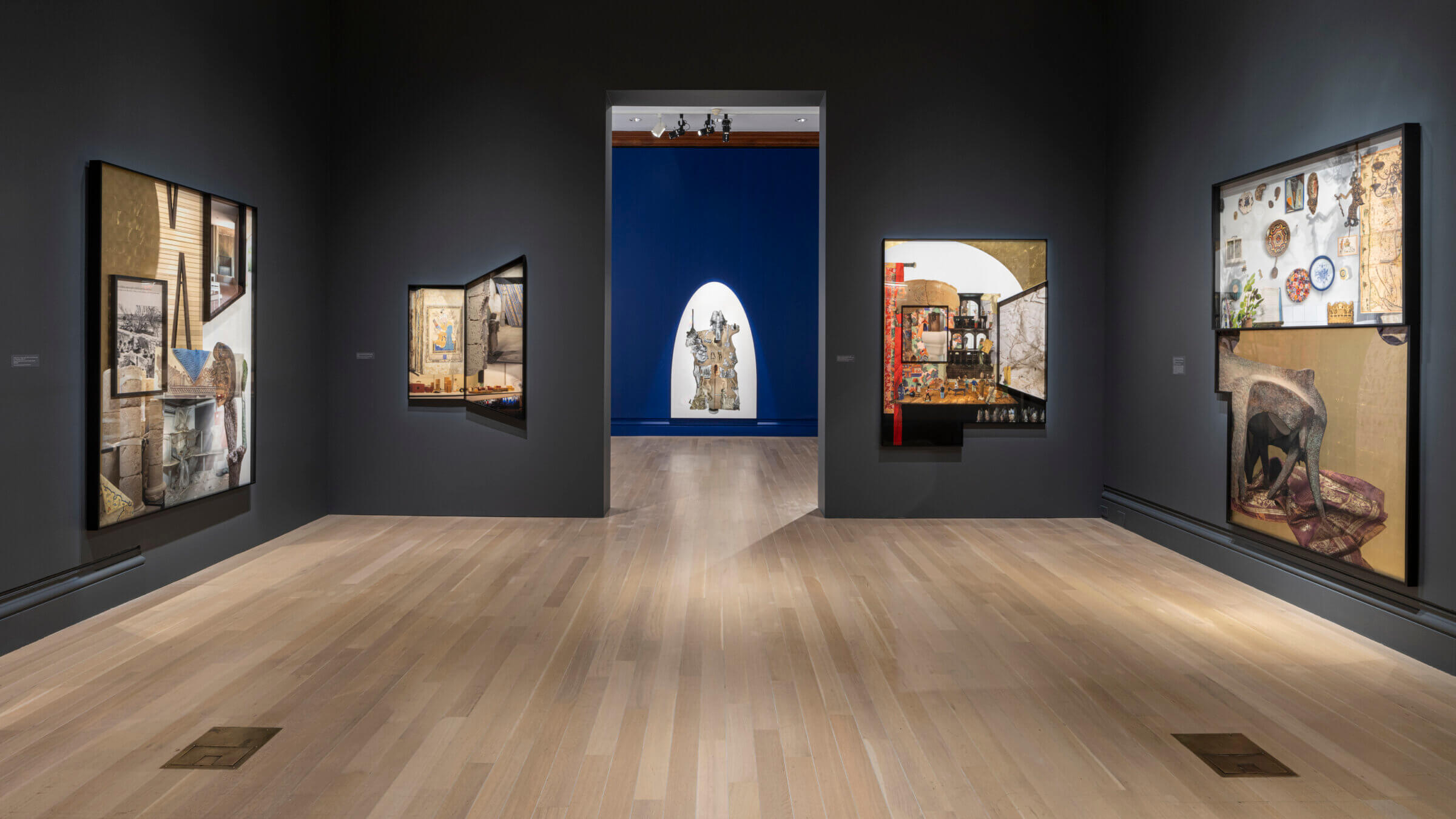
Installation view of Ilit Azoulay: Mere Things at the Jewish Museum. Photo by Kris Graves
A rusted bolt seems to sit on a shelf next to a cherry-red, toy plastic gas pump. Here a sea shell hangs near a metal ruler. There a worn pair of blue jeans appears to hang on the wall next to faded photographs. Each object was left behind, hidden inside the walls of houses in South Tel Aviv slated for demolition. That is until the Israeli artist Ilit Azoulay found them, cleaned them, and photographed them for her 2010 work “Tree For Too One.”
A time capsule of sorts, the multimedia work shows the found objects of people, mostly immigrants to Israel, who, since they were short on building supplies, mixed refuse in with the concrete to build their first homes. Just as Azoulay teased out each item from the crumbling concrete, the work asks viewers to tease out a deeper meaning.
“Azoulay asserts the importance of objects that could otherwise be considered humble. She uses size and space to do that. She prompts us to ask questions as to why and how we assign importance to certain objects,” said Shira Backer, a curator at the Jewish Museum.
That question is the beating heart of The Jewish Museum’s new exhibit, “Ilit Azoulay: Mere Things,” the first U.S. solo museum exhibition dedicated to Azoulay’s work. The exhibition features selections of Azoulay’s work from 2010 to the present, including digital photo collages, archival objects and sculpture.
Throughout Azoulay probes the way images and objects — lost and found — convey knowledge, form memory and either bolster or question accepted historical narratives. Most importantly, the exhibit, which runs through Jan. 25, 2025, asks viewers to see each other’s humanity and reconsider how we perceive each other’s stories.
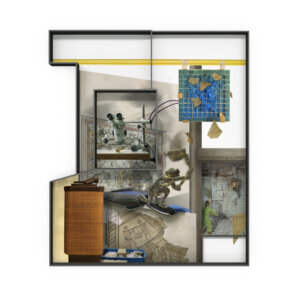
Born in Tel Aviv in 1972 to parents who immigrated from Morocco, Azoulay now lives and works in Berlin. Initially trained as a photographer, Azoulay creates composite images that combine new and existing photographs for her multimedia work.
For her 2017 “Vitrine No. 4 (Take, for instance, this) true story,” Azoulay spent three years researching The Israel Museum’s archives and storage rooms in Jerusalem. She gathered stories from staff, curators, conservators, and archivists, and created several large-scale works featuring objects that had been tucked away for years.
The photocollage comprises several objects that Azoulay photographed from the Israel Museum. The focal point of the piece is a shimmering, gold pomegranate.
Excavated on the site of the First Temple in 1979, the pomegranate, inscribed on the bottom with the words “Sacred to the priest of the House of God,” was thought to be from the first Temple of Jerusalem.
Backer likened the pomegranate to the Jewish Mona Lisa. “It had its own guard, its own vitrine,” she said.
Then things took a turn. While the pomegranate itself was from the first Temple era, archaeological experts eventually learned the inscription on its base was not.
“The inscription was a modern forgery. The pomegranate went from being enshrined and venerated to a problematic object. It went from being history with a capital H to history that doesn’t get put into its own special foam box,” Backer said.
Azoulay incorporates the image of the pomegranate several times in the piece, most prominently under a microscope, inviting viewers to be more critical of what they see and what narratives they hear, Backer said.
That theme is perhaps most apparent in her 2014 “Shifting Degrees of Certainty.”
Here, Azoulay has arranged photographs of 85 objects from historical sites in Germany, arranging them in such a way that they all seem equally important whether they be an imperial throne or a stuffed parrot.

An audio guide of the work highlights aspects of each object’s history and, in some cases, explains how an object’s history may differ from what historians and curators had previously thought to be true.
“We tell stories through objects, but objects can also be disruptive to the story we want to tell,” Backer said.
The mini retrospective also includes selections from Azoulay’s 2022 series “Queendom,” which she first presented as part of her solo exhibition for the Israeli Pavilion at the 59th Venice Biennale in 2022.
Working digitally with prints by David Storm Rice, an Austrian-British and Jewish art historian and archaeologist, Azoulay isolated motifs and components from images of medieval Islamic metal vessels, using photo-editing techniques to fashion new shapes that envision a matriarchal society.
“She reimagined each object so it looks queenly, digitally manipulating them so they look female or nonbinary,” Backer said.
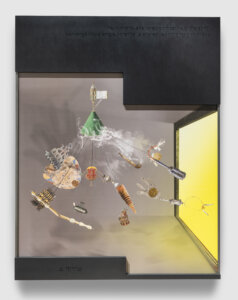
For “Unity Totem,” a new work commissioned for this exhibit, Azoulay mined the Jewish Museum’s collection for ritual objects like Torah finials and hamsa amulets that came from the scores of Jewish communities that once dotted the Arab world.
Each object appears suspended from a green hat, which resembles a cone of incense. Azoulay creates the illusion of movement, the idea that the totem is sending spiritual energy into the world.
A framed accompanying prayer of healing furthers the idea: “Let us leave behind the ancient narratives that have enabled violence and instead embark on a process of personal and collective transformation.”
“She made the piece very much with the present moment in mind,” Backer said.
A message from our Publisher & CEO Rachel Fishman Feddersen

I hope you appreciated this article. Before you go, I’d like to ask you to please support the Forward’s award-winning, nonprofit journalism so that we can be prepared for whatever news 2025 brings.
At a time when other newsrooms are closing or cutting back, the Forward has removed its paywall and invested additional resources to report on the ground from Israel and around the U.S. on the impact of the war, rising antisemitism and polarized discourse.
Readers like you make it all possible. Support our work by becoming a Forward Member and connect with our journalism and your community.
— Rachel Fishman Feddersen, Publisher and CEO







